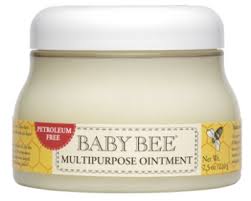Skin discolorations can be as troubling as skin infections and other maladies. If you’re a first time mother who has never encountered these issues before, it can be challenging to determine which ones are serious causes for concern and which ones are just a part of your baby’s normal development. Here are some of the more common skin discolorations that your baby may develop. Remember, though, that if you are concerned about your infant’s health that there’s no harm in taking her to see a doctor.
Stork Bites
The term “stork bites” or “angel kisses” refers to birthmarks that develop along the back of the neck as well as over the forehead, nose, lips, eyelids, and cheeks. They come about because of blood vessel dilation, but there’s nothing to worry about. The Baby Center assures mothers that the discoloration comes from nothing more than the baby’s thin skin. The capillaries and their dilation are visible because of their nearness to the surface. Most of the time, they will fade as the infant’s skin thickens. You don’t need to do anything except keep the skin clean.
Mongolian Spots
Most parents are prepared for diaper rash, but they may be quite shocked when they go to change their babies’ diapers and discover Mongolian spots. Mongolian spots can range in appearance from small black marks on the buttocks to large dark areas that may swathe the infant’s entire lower body. They can be solid black, or they may look like deep bruises, or they may be gray-blue. Fortunately, they’re painless. They occur because of variations in skin pigmentation, and they generally go away in time. Just keep the area clean.
Port Wine Stains
The port wine stain is a purple-red birthmark that can appear anywhere on the body. Its actual name is nevus flammeus, and it is caused by damaged nerves and blood vessels. Most experts cannot do anything to remove the birthmark, and most of the time they will watch your infant for other signs of nerve damage. The discoloration itself is not a guarantee of nerve damage throughout the body. Baby Center just encourages parents to discuss their concerns with the doctor and make sure that the baby is checked for other potential issues.
Café au Lait Spots
Café au lait spots get their name from the color, which often appears similar to coffee with a bit of milk. They range in shade from light brown to dark brown, and they can appear anywhere on the baby’s body within the first few years. These spots will change in coloration and size, but you should not be alarmed by this. The spots themselves are just concentrations of melanin in most situations. What to Expect does recommend concern, though, if more than six appear on the skin and are larger than a quarter. In those instances, it may be an indication that your baby is developing neurofibromatosis. You will need to take your baby to the doctor to discuss the possibility and check for other symptoms.















